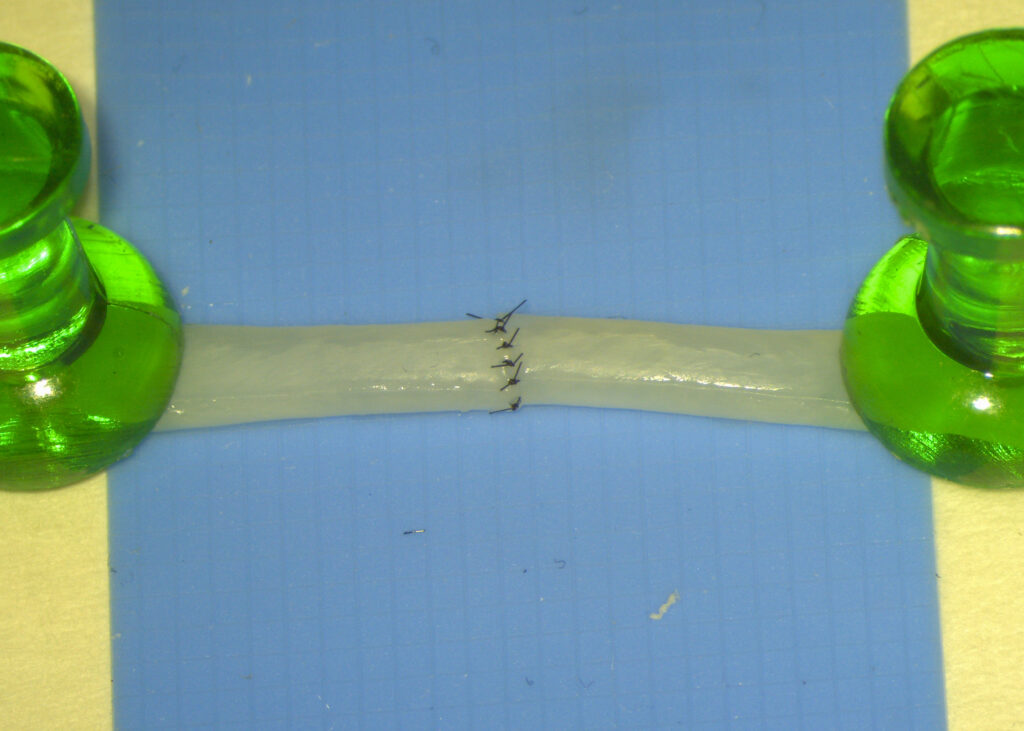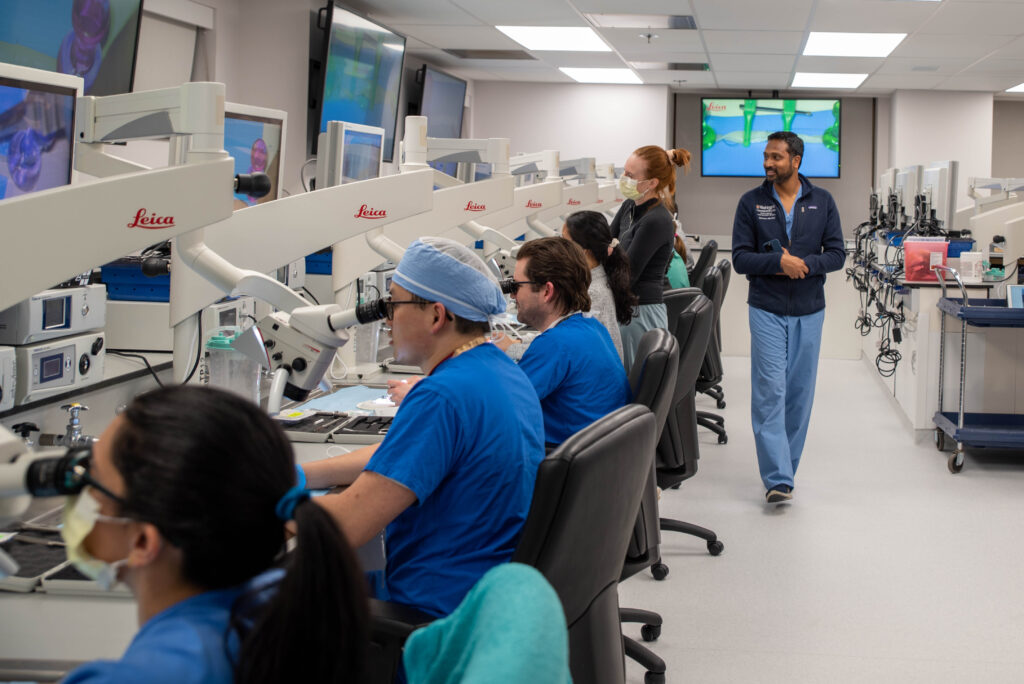It was a full house in the surgical simulation lab Feb. 15 as residents took advantage of an opportunity to practice microvascular anastomosis, the reconstruction of small blood vessels.
The procedure is one of the most challenging surgical skills to acquire — the repaired vessel has to remain patent (open), but not leak. It is considered a test of patience, technical execution and manual dexterity.

The course was hosted by otolaryngology faculty members Patrik Pipkorn, MD, and Sid Puram, MD, PhD, and Synovis Micro representative Shad Huncker. Head and neck fellows Molly Heft-Neal, MD, and Ray Wang, MD, provided additional hands-on instruction for residents.
“Most people think if they master suturing in regular surgery, the same set of skills can be applied under the microscope,” said Pipkorn. “Microvascular surgery requires a very different set of skills, and practice is essential.”
According to Puram, the session was most certainly beneficial for participating residents.

“We were very fortunate to have the support of Synovis Micro to provide such a high quality session,” he said. “The simulation lab is a great venue for activities like this that are best learned and practiced outside the operating room.”
The large turnout for this voluntary event was perhaps the best testament of the residents’ desire to become proficient with these difficult procedures.
“It was awesome to be able to learn this technically complex skill and get hands-on practice in a low-stakes environment,” said first year resident Katherine Garvey. “It was very helpful to have feedback from attendings and fellows in real time. I’m looking forward to the next session!”
